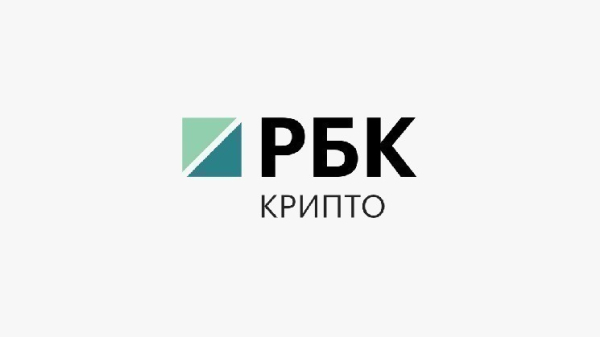All of Saylor's tools. Where does Strategy get the money to buy Bitcoin?
 We explain how the company with the largest Bitcoin reserves is raising capital to purchase new batches of the cryptocurrency.
We explain how the company with the largest Bitcoin reserves is raising capital to purchase new batches of the cryptocurrency.
Founded by Michael Saylor, Strategy (formerly MicroStrategy) is the world's largest corporate Bitcoin holder. While it regularly reports new cryptocurrency purchases, it doesn't maintain a pre-determined reserve of funds. Each time new coins are added to the balance sheet, it means the company has previously raised additional capital.
This is accomplished through the issuance and sale of shares. These can be either Strategy common shares (ticker: MSTR) or one of four types of preferred shares: STRF, STRC, STRK, or STRD. The company issues new shares, sells them on the open market, and uses the proceeds to purchase Bitcoin.
rbc.group
Since November 2025, the company has also launched Stream shares (STRE), but unlike the others, which are denominated in dollars, these preferred shares are denominated in euros and are aimed primarily at institutional investors in Europe.
How it was at the start
Strategy (then MicroStrategy) began buying Bitcoin in 2020 using a convertible bond model. This allowed it to raise funds at a low interest rate with the option to subsequently exchange the bonds for MSTR shares at a premium. Investors found the instrument attractive due to the potential growth of both the company's shares and Bitcoin itself, while Strategy itself benefited from it as a source of low-cost, long-term capital.
Over time, the company transitioned to a different financing model, making the issuance of shares its primary instrument. However, the bond debt remains, amounting to approximately $8 billion as of November 2025. The company is using part of the capital from the share issue to repay it. A significant portion of this capital continues to be used specifically to increase cryptocurrency reserves.
MSTR Common Stock
Strategy's Bitcoin purchases aren't motivated by attempts to “capture” a favorable moment on the BTC/USD chart. The company simply sells its assets when it deems it appropriate and when market demand allows.
When issuing common shares (MSTR), the benchmark is not Bitcoin itself, but the MSTR to BTC ratio. The company prefers to sell shares when their market price significantly exceeds the net asset value per share (mNAV). As long as this ratio is above 1, the offering remains technically advantageous, as it allows for an increase in the number of Bitcoins per share. However, as the ratio approaches 1, the benefit diminishes, and Strategy uses this tool sparingly.
Preferred shares
Strategy's preferred shares are functionally similar to bonds. The company issues them when it deems the borrowing costs acceptable. The higher the market price of such a security, the lower the effective borrowing rate. At a lower price, the amount of capital raised will be limited.
An additional limitation is low liquidity. Preferred shares trade in significantly smaller volumes than MSTR common shares, limiting the potential for short-term fundraising, even if the market price appears favorable.
The MSTR common stock offering gives the company significantly greater capital raising capacity. Therefore, weeks in which Strategy does not sell MSTR common stock are almost always accompanied by minimal new Bitcoin purchases. In October 2025, the company completely suspended the issuance of new MSTR shares. This explains why the three subsequent Bitcoin purchases were relatively small in volume, and then, in certain weeks, there were no purchases at all.
Theoretically, Strategy could raise up to $500 million in just one week by issuing MSTR and use the funds to purchase Bitcoin. However, such an action would put pressure on the MSTR-to-Bitcoin ratio, and given the low premium to mNAV, the company does not believe it is advisable.
That's why, since October, the primary focus has been on issuing STRC preferred shares. This instrument can be considered a stablecoin-like instrument, with a yield of approximately 10% per annum and monthly payments. Unlike STRK, STRF, and STRD, which can fluctuate sharply in price, STRC's price is more stable, making it more attractive to less risky investors. This is reflected in trading activity: STRC trading volume is comparable to the combined volume of the other three preferred shares.
Even with STRC trading below the $100 parity level, its technical performance appears stable. Once the price recovers, the company will be able to increase production volumes and use more funds to purchase Bitcoin.
But this is a slow process, and it's impossible to raise hundreds of millions of dollars per week using STRC alone. However, as recognition of the instrument and investor demand grows, Strategy will be able to more actively utilize this channel. This approach allows Strategy to maintain a cycle in which the issuance of new securities further fuels Bitcoin accumulation and can contribute to the company's share price.
The risk of the entire scheme is that, given the low premium MSTR offers to the company's cryptocurrency reserves, the share issue provides almost no increase in Bitcoin per share. This limits Strategy's ability to raise capital and makes the pace of acquisitions highly dependent on market conditions.
Saylor, at least in his public statements, remains confident in his chosen model. According to him, even an 80-90% drop in Bitcoin wouldn't stop the company. As of the end of November 2025, Strategy holds approximately 650,000 Bitcoin, with an average purchase price of $74,400.
“At the height of the 2022 crypto winter, our average buy price was $30,000, while Bitcoin was trading almost 50% lower at $16,000. What did we do? We bought more,” wrote Strategy's official X account.
Source: cryptonews.net



